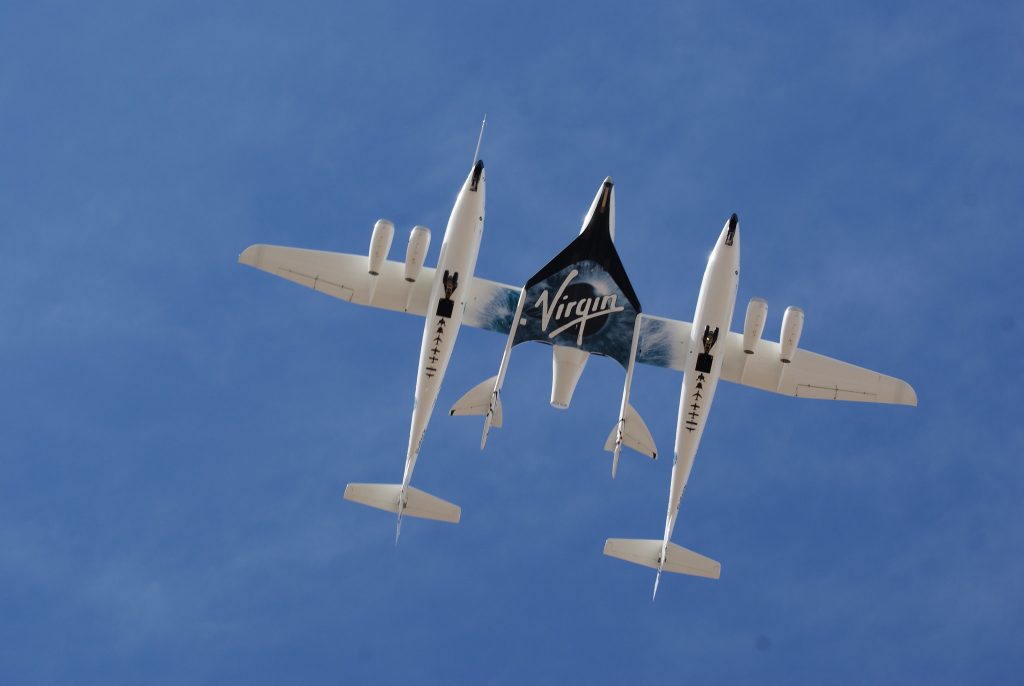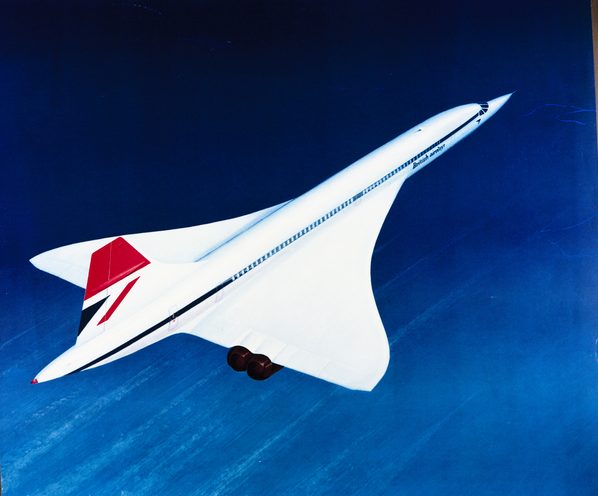Any links on this page that lead to products on Amazon and other companies may be affiliate links and we earn a commission if you make a qualifying purchase. Thanks in advance for your support!
For many, the dream of being able to take to the skies and fly a light aircraft in an affordable, relatively easily learnt and safe way is an ambition that often gets held back in the UK, mostly through cost worries and training requirement commitments.
Training in a small two-seat Cessna 152 can cost over £200 and hour and obtaining a full pilots licence could amount to a £10,000-plus investment. Extensive ground study exams are a commitment and a JAA flight medical examination is required.
So, are 3-axis microlights relatively easy and economical to fly?
To find out more Nick Spall joined a microlight flying club in Hertfordshire and embarked on a course to gain his unrestricted National Private Pilot’s Licence (Microlight), known as the NPPL(M).

What’s the difference between a microlight and an ultralight aircraft?
Born out of the “powered hang glider” evolution that occurred from the 1970’s, light weight aircraft definitions vary across the world and they can differ considerably in some countries.
In the USA, an “ultralight” aircraft is defined as weighing less than 115 kg and it has to be a single seater. These types are unregulated by government controls there. A “light sport” aircraft in the US is defined as having a maximum weight of 600 kg in the USA and it can be a two-seater – these aircraft are fully regulated by the FAA.
In the UK “ultralights” are normally considered as weighing less than 115 kg and they need to be single seaters to allow for unregulated flight. Two-seater “microlights” are regulated. As of August 2021, the maximum weight limit of a microlight, either a 3-axis conventional aircraft type or a “flex-wing” trike/weight-shift control aircraft – effectively an advanced powered hang glider like the Quantum – has to have a weight of less than 600 kg and a landing speed of less than 45kts.
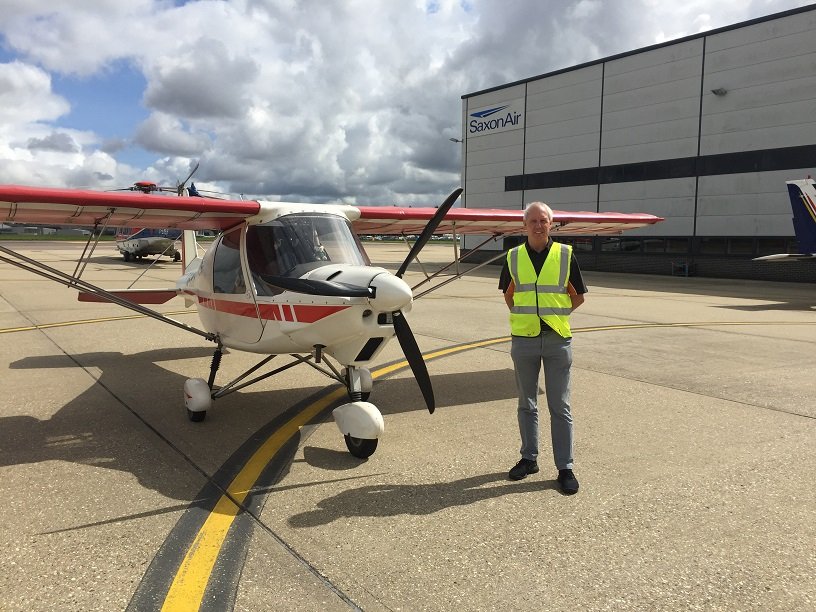
Microlights in the UK are limited by the CAA to two seats, cannot be flown in cloud or at night, plus they have to adhere to Visual Flight Rule (VFR) restrictions. Having said that, touring across the UK is perfectly possible at say 1,500- 3,000ft and above altitudes, assuming routes are chosen outside controlled airspace. Permission to enter certain controlled airspace can also be obtained by radio if required in some cases, via the normal aviation air traffic control system in the UK.
Additional microlight restrictions include no aerobatics, no spinning and no tight turns with a wing angle greater than 60 degrees.
However, with landing and take-off distances of only 150 metres, microlights are very versatile and make use of small grass farm strips for touring across the country – with good engine endurance and reliability now, flights across the Channel to France and beyond are also possible.
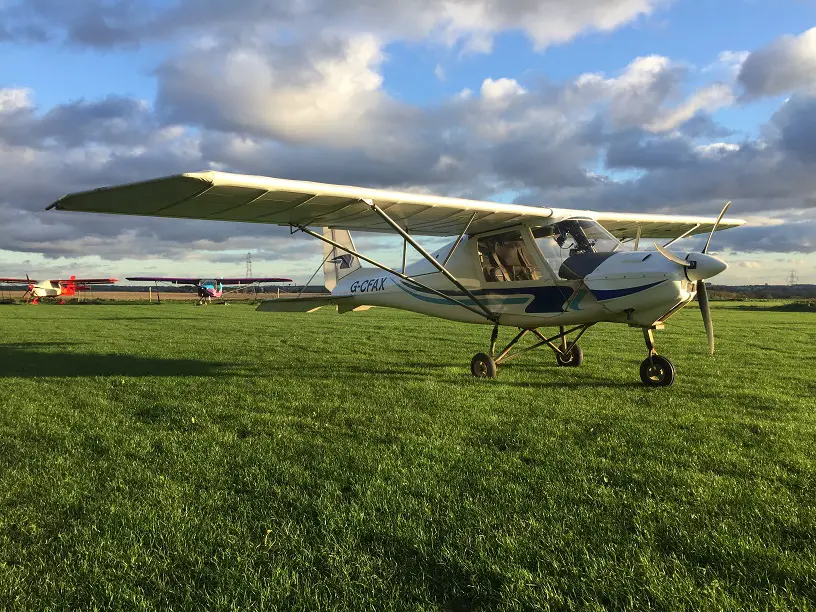
The Comco Ikarus C42, manufactured in Germany. A two-seat, fixed tricycle gear microlight weight aircraft – composite fuselage material, aluminium spars and stretched Kevlar/Mylar/Polyester laminate wing material (Photo: Nick Spall)
How long does it take to learn to fly a microlight?
Full information on learning to fly, local training schools and actually owning a microlight can be found in the British Microlight Aviation Association (BMAA) website: www.bmaa.org
This writer took a relatively slow approach to learning to fly at a microlight school, with about 10 months of lessons spread across winter and summer months to eventually pass the required flying tests and ground school exams. Some people could gain their unrestricted NPPL (M) license more quickly by booking blocks of lessons. Flying at least once a week is useful to retain the flying knowledge gained.
The BMAA website explains how to go about obtaining a microlight pilots license – at least 25 hours training experience is needed to qualify, though most people would probably require at least 30-35 hours, particularly as long-distance navigation exercises of up to 100 nm need careful preparation and good training weather is a must.
Importantly, the unrestricted NPPL(M) minimum 25 logged hours required are less than the more the onerous NPPL demands for GA aircraft, which are a minimum of 43 hours training before a licence can be gained.
This writer had the advantage of some previous gliding and GA flying hours prior to embarking on a microlight training course. However, the key stage tasks including mastering climbing and descending, balanced turns, power and speed management and, crucially, safe and consistent landings soon seemed achievable in the very stable and forgiving C42 trainer that was being used. Whilst the early microlights such as the Skyranger “Classic” do require some use of rudder and control column action in combination, the more streamlined modern aircraft such as the C42 and Eurofox often only need stick movement for balanced turns.
Quiet airfields, with several grass runways for varying wind directions are a useful bonus for students. Wind limits of about 15 kts would normally be applicable for safe landings, depending on runway directions.
Trainees can normally expect to go solo after 10-20 hours flying time – that first solo is hugely rewarding and exciting as a key stage in a flying career …..a true “once in a lifetime” experience.
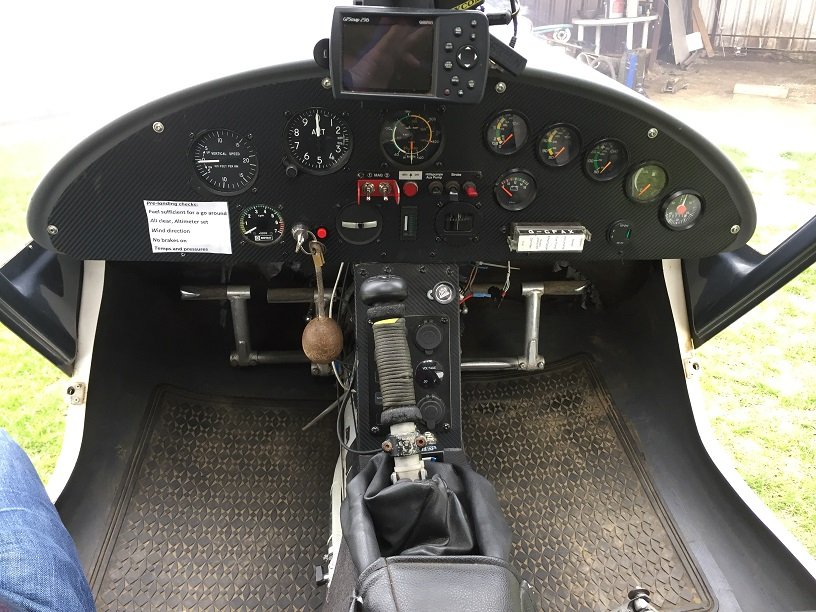
How much does it cost to learn to fly a microlight?
Some microlight schools charge only £130 per hour for instruction and so, assuming a course of say 30 hrs spread over a few weeks, an initial training budget of £4,000 is to be expected.
Add in ground school and fees for the five theory exams – air law, meteorology, human performance, navigation and aircraft-technical – plus the actual final flying test cost, the BMAA licence application and club membership fees, then a total course cost of £5,000 appears quite reasonable.
Obviously, a lot depends on how trainees progress and the weather conditions over the course period. Flexible instruction timing spread over as many months that are needed, plus easy lesson booking makes the whole process really enjoyable and rewarding.
What qualifications do you need to fly a microlight?
No actual formal academic qualifications are needed to fly microlights, apart from the NPPL(M) licence which you would expect to possess to take passengers and gain aircraft insurance beyond club aircraft.
Some numeracy skills are obviously required, particularly for navigation training, though calculators are to hand of course. GPS apps such as “Skydemon” are very useful for cross-country flying. Good training manuals such as Brian Cosgrove’s “Microlight Pilot’s Handbook” are available as well as on-line instruction videos.
Flying microlights solo from as young as 17 years old is possible in the UK and there is no upper age limit. The Hertfordshire-based veteran pilot and former aero-engineer Ted Barrett is possibly the oldest qualified microlight pilot at a young 100 years old, as from May 2021.
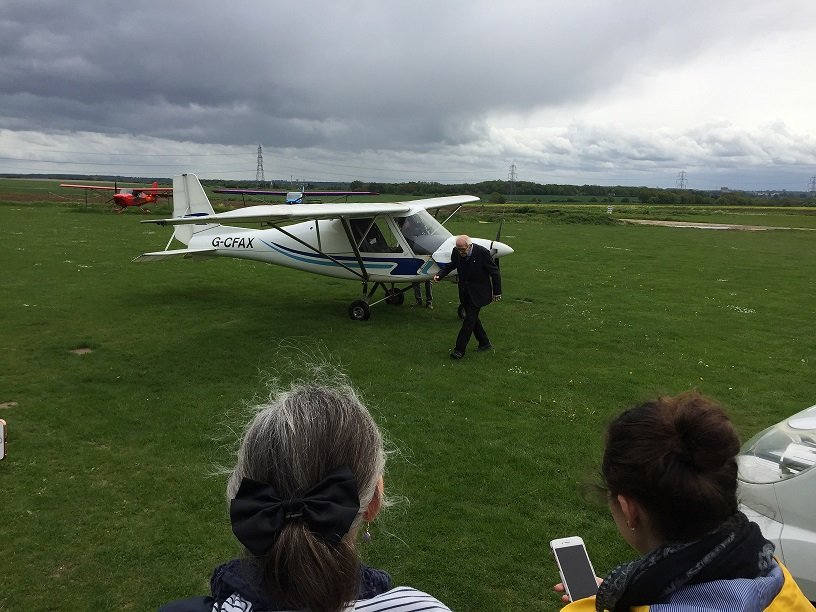
Ted Barrett at his 100th birthday celebrations, still regularly flying the Ikarus C42 together with other 3-axis microlight aircraft (photo: Nick Spall)
A medical examination is only required via a self-certification questionnaire process, on-line from the BMAA/CAA.
How much does a microlight cost to buy and run?
A 3-axis microlight can be home built from a kit, though most are factory assembled.
New microlights such as the Skyranger Ninja, Ikarus C42, Eurostar or Eurofox would cost between £50-100,000 new, but second-hand aircraft can go on to provide years of service, often equipped with reliable Rotax 4-stroke 912 (80hp) or 912S (100hp) engines. Second-hand prices start at about £20,000 plus – the afors.com website is a good source of aircraft sales information.
A yearly “Permit to Fly” check will be required from the BMAA, but this is cheaper and simpler than the Certificate of Airworthiness (“C of A”) system used for heavier GA light aircraft.
Most microlight pilots join syndicates for aircraft ownership and these could vary from 2 perhaps up to 10 people in an ownership group. A typical good value set-up for a basic Skyranger syndicate might include a three-year contribution of say £1,500, with £35 per month and £30/hour applied to cover aircraft insurance, basic maintenance and hangarage.
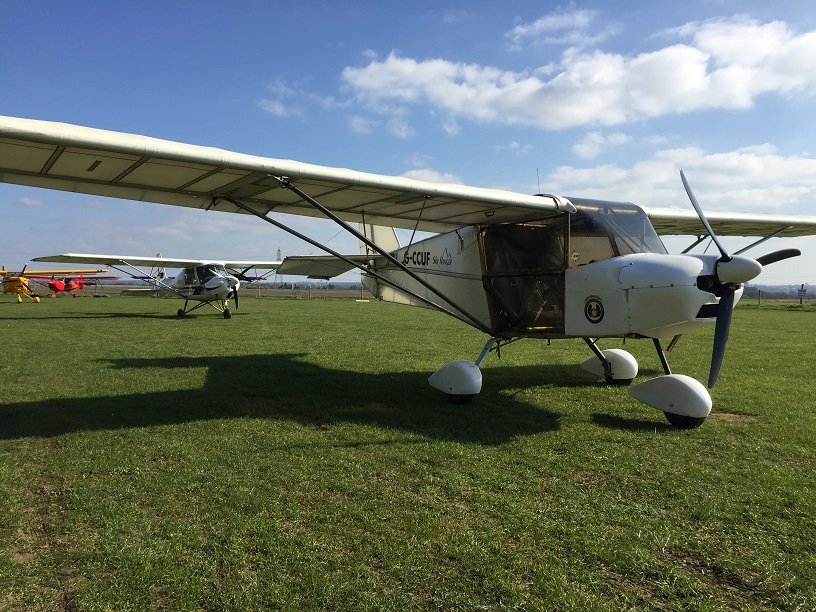
Fuel for microlights is normally the basic 4-star petrol for a 4-stroke engine, with a consumption of about 12 litres an hour, or about 30 miles per gallon for a 65-litre fuel tank. Such fuel efficiency is appealing. With electric engine aircraft such as the Pipistrelle emerging for at least 45-minute endurance training flights and also biofuels due for the future, microlight flying will gradually become greener and more sustainable.
How far can a microlight fly?
The Comco Ikarus C42 two-seat microlight could typically achieve a cruising range of 375 miles, using a 65-litre tank, with a 20-minute reserve, flying at best cruise speeds of 86 kts.
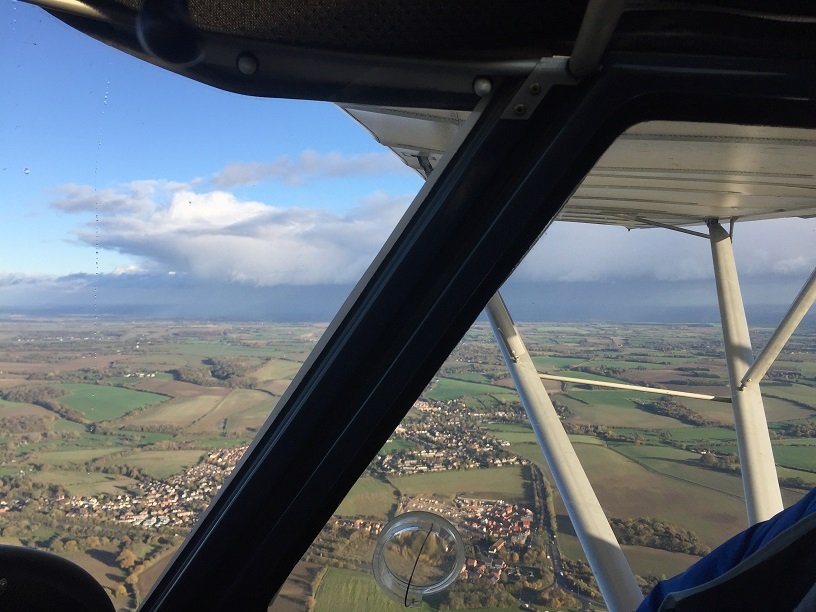
Flying over Hertfordshire at 1,200 ft in the C42 (photo: Nick Spall)
Using an auxiliary tank of 130 litres, this range could be extended to 780 nm. The recent new and more relaxed 600 kg weight restrictions will allow more fuel to be carried for touring microlights in the UK.
Following the CAA’s August 2021 changes to the UK Air Navigation Order (ANO) that increase the weight limit restriction of microlight aircraft from 450kg to a 600 kg maximum, plus change the maximum stall/ normal landing speed from the previous limit of 35 kts to a new 45 knots, the 3-axis microlight market should now be opened up so that the evolution of what some countries term “light sport aircraft” can move ahead in the UK.
Commenting on the new CAA flexibility that has been introduced, Ray Wilkinson a Principal Lecturer in Aerospace Engineering at the University of Hertfordshire and an experienced 3-axis microlight pilot says:
“This move will free-up the microlight scene in the UK so that more flexible long-distance travel can occur for two-seater ‘sport’ aircraft for the future. More fuel can now be carried, and stronger and more-capable aircraft fuselage and wing structures can be introduced. Also, we can begin to move towards sustainable bio-fuels and electric-powered aircraft for the UK general-aviation scene.”
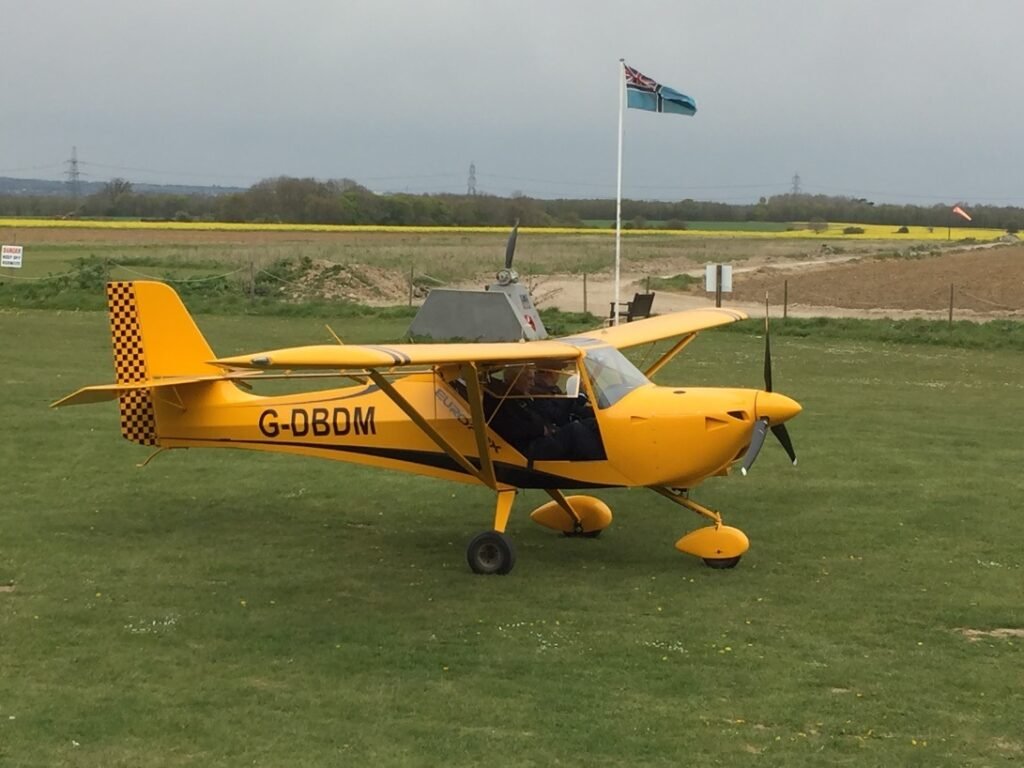
How high can a microlight fly?
Normally a microlight would fly below 3,000 ft to remain outside possible restricted airspace that may be nearby and to comply with air traffic regulations near controlled airspace.
However, in areas of relatively “open” and unrestricted airspace over much of the UK, microlights can fly to 10-12,000 ft in theory, without a great impact on their engine performance. Above that level the pilot and passenger would of course require oxygen in any event.
Climbing and descending times would need to be taken into account to achieve such levels of course, so that the normal flying heights would be expected to follow the 1,000 to 3,000 ft level band.
Any microlight that is engaged in low flying obviously has to comply with the “500ft rule” – here, via the CAA’s Air Navigation Order (ANO) regulations, no flying is allowed within 500ft of a person, vehicle, vessel or structure in the UK, unless the aircraft is taking off or landing.
How Fast Do Microlights Fly?
Normal flight speeds in 3-axis microlights are a little less than conventional light aircraft such as the Cessna 152, Piper Arrow or Cherokee. However, with the increasing weight allowances and more advanced materials and new “slippery” fuselage designs emerging, so microlight aircraft speeds are gradually increasing.
For an Ikarus C42, a mid-range cruise speed of 86kts would apply when an 80hp Rotax 912 engine is fitted – this increases to 90 kts with a 100hp engine. The max level speed would be 105 kts, with a max speed “never to exceed” (VNE) of 121 kts.
Stalling a 3-axis microlight is normally an obvious and fairly benign experience, with plenty of warning – the C42 stalls at only 32kts with full flap applied and 42 kts with no flaps. A respectable climb rate of 850 ft./minute can be obtained with an 80 hp Rotax engine.
Can microlights fly at night?
The CAA do not allow microlights to fly at night or in cloud under Instrument Flight Rules (IFR) and most do not have traditional IFR instruments such as artificial horizon indicators (AHI) or turn and bank instruments.
Slip ball indicators are normally fitted though to allow a check on any “skid” in the turn, as needed.
However, many new light weight instruments are now available in small electronic units which achieve the same thing as an AHI or turn and bank indicator, though in view of the flight limitations these are an aid only and not considered as a way of allowing safe flying at night or in cloud.
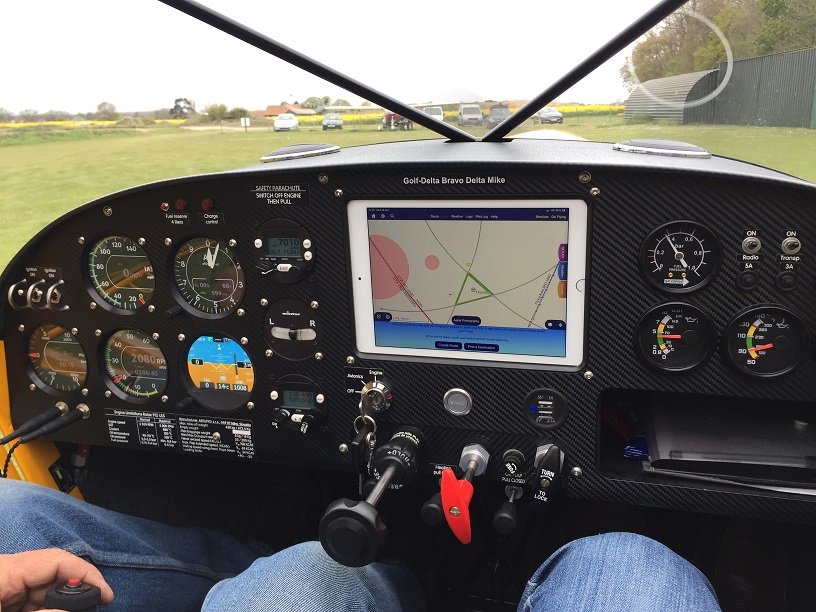
The instrument panel of a Eurofox – a good combination of a Skydemon GPS tablet navaid, plus an electronic AHI (photo: Nick Spall)
How safe are microlights?
The use of relatively reliable four-stroke engines like the Rotax 80hp and 100hp units has made local and touring flying in 3-axis microlights at least as safe as established GA light aircraft.
New robust wing fabric material, stronger solid material fuselage design and the availability of new lightweight GPS navaids has also gradually increased flying safety for microlights.
The good glide ratios of microlights – approximately 11:1 for the C42 – allows for very good short-field forced landing potential; also, in recent years some manufacturers have been fitting emergency total aircraft recovery ballistic parachute systems to 3-axis machines, adding a further level of reassurance for flying safety.
Verdict on the microlight training experience
For this newly qualified pilot’s perspective, training in a microlight is a hugely rewarding experience and not beyond most people’s abilities. The overall impressions from the early stages of flying modern 3-axis machines is that they are stable, comfortable, forgiving and safe to fly.
The initially daunting worries of how to properly land these aircraft on short strips soon goes, with good instruction.
Also, being able to accurately pilot such machines across long distances, avoiding cloud, bad weather and restricted airspace and looking down at congested roads from 1,500 ft in open skies is a true delight.
With more sustainable engines and fuels that are emerging, plus the expanding microlight weight limits, the 3-axis microlight has an exciting future ahead as a personal touring flying machine.


